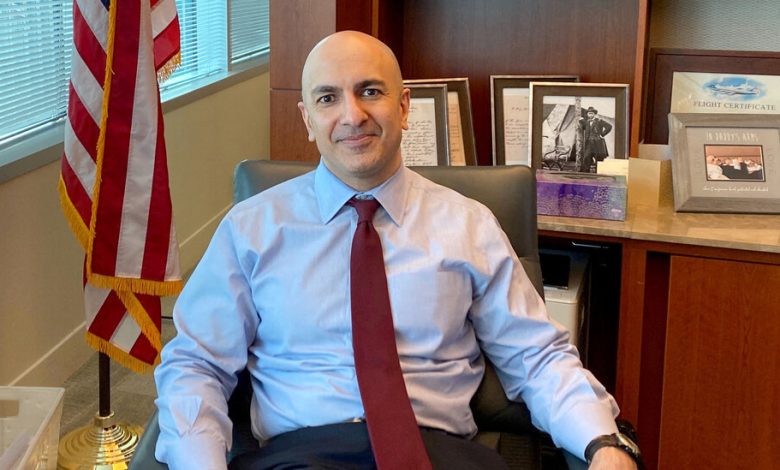Fed Official Compares Inflation to Uber Surge Pricing

A Federal Reserve official compared inflation to Uber surge pricing on Wednesday in the first formal monetary policy remarks of 2023, kicking off what promises to be a contentious year of debate about how fast price increases will fade and how aggressive America’s central bank needs to be in counteracting them.
Neel Kashkari, the president of the Federal Reserve Bank of Minneapolis and one of the 12 officials with a vote on monetary policy this year, published an essay on monetary policy and the inflation surge in 2021 and 2022. Consumer price increases were as high as 9 percent last year, and remain above 7 percent according to the latest data.
But the price pop was driven by a combination of high demand and supply constrained by outside shocks — mainly the pandemic and the war in Ukraine — rather by wages and shifting expectations traditionally thought to drive lasting inflation. It is easy to think of the burst in terms of ride-share surge pricing, Mr. Kashkari said: Prices jumped, profits increased, and wages picked up, but there just wasn’t enough supply to bring the market into balance.
“Our models seem ill-equipped to handle a fundamentally different source of inflation, specifically, in this case, surge pricing inflation,” Mr. Kashkari wrote, adding that “even if we had been able to identify all the shocks in advance, I don’t think our workhorse models would have come anywhere close to forecasting 7 percent inflation.”
The implication, Mr. Kashkari noted, is that the Fed needs to deepen its “analytical capabilities surrounding other sources and channels of inflation” outside of expectations and wage growth.
Inflation F.A.Q.
What is inflation? Inflation is a loss of purchasing power over time, meaning your dollar will not go as far tomorrow as it did today. It is typically expressed as the annual change in prices for everyday goods and services such as food, furniture, apparel, transportation and toys.
What causes inflation? It can be the result of rising consumer demand. But inflation can also rise and fall based on developments that have little to do with economic conditions, such as limited oil production and supply chain problems.
Is inflation bad? It depends on the circumstances. Fast price increases spell trouble, but moderate price gains can lead to higher wages and job growth.
How does inflation affect the poor? Inflation can be especially hard to shoulder for poor households because they spend a bigger chunk of their budgets on necessities like food, housing and gas.
Can inflation affect the stock market? Rapid inflation typically spells trouble for stocks. Financial assets in general have historically fared badly during inflation booms, while tangible assets like houses have held their value better.
Mr. Kashkari is just one of the Fed’s officials, but his comments came after a long period over the holidays during which the central bank has been largely silent. They come ahead of minutes from the Fed’s December meeting, which will be released at 2 p.m. Eastern on Wednesday, providing a window into Fed officials’ thinking about the path ahead for interest rates.
The Minneapolis Fed president acknowledged a frequent criticism of Fed policy right now: If inflation is being caused by one-off disruptions, why is the Fed using its traditional tools — which work heavily via the labor market — to restrain it?
“Unfortunately, the initial surge in inflation is leading to broader inflationary pressures that the Federal Reserve must control,” he wrote. “For example, nominal wage growth has grown to 5 percent or more, which is inconsistent with our 2 percent inflation target given recent trend productivity growth.”
Mr. Kashkari wrote that he expects policy to play out in three distinct phases.
First, the Fed is raising interest rates to restrain demand and bring the economy back into balance, something it has recently done at the fastest pace since the 1980s. Officials are now slowing those moves down.
Next, the Fed will pause and hold rates at a high level. Mr. Kashkari thinks that will be appropriate at around 5.4 percent — an estimate that places him among the Fed’s more aggressive officials, though a few see rates going even higher. Rates are currently set in a range between 4.25 percent and 4.5 percent.
Understand Inflation and How It Affects You
- Social Security: The cost-of-living adjustment, which helps the benefit keep pace with inflation, is set for 8.7 percent in 2023. Here is what that means.
- Inflation Forecasts: Economists misjudged how much staying power inflation would have in 2022. Things could now get better — but there’s ample room for humility.
- Tax Rates: The I.R.S. has made inflation adjustments for 2023, which could push many people into a lower tax bracket and reduce tax bills.
- Your Paycheck: Inflation is taking a bigger and bigger bite out of your wallet. Now, it’s going to affect the size of your paycheck in 2023.
“To be clear, in this phase any sign of slow progress that keeps inflation elevated for longer will warrant, in my view, taking the policy rate potentially much higher,” he wrote.
Finally, the Fed will eventually cut rates. But Mr. Kashkari, like many of his colleagues, sees that as a long way away.
It would be a mistake “to cut rates prematurely and then have inflation flare back up again,” he wrote.
